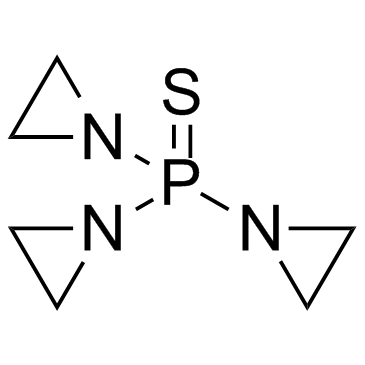Radiation-free allogeneic conditioning with fludarabine, carmustine, and thiotepa for acute lymphoblastic leukemia and other hematologic malignancies necessitating enhanced central nervous system activity.
Petros Christopoulos, Hartmut Bertz, Gabriele Ihorst, Reinhard Marks, Ralph Wäsch, Jürgen Finke
Index: Biol. Blood Marrow Transplant. 18(9) , 1430-7, (2012)
Full Text: HTML
Abstract
Total body irradiation has been the mainstay of conditioning since the inception of allogeneic hematopoietic cell transplantation, but toxicity often precludes its use. For less-fit patients with acute lymphoblastic leukemia and other hematologic malignancies frequently affecting the central nervous system, we designed a radiation-free regimen with fludarabine (25 mg/m2/day on days -6 to -4), carmustine (400 mg/m2 on day -6), and thiotepa (5 mg/kg twice daily on days -5 and -4), all of which readily penetrate the blood-brain barrier and have potent antileukemic and lymphotoxic activity. Here we present a series of 30 consecutive patients with high-risk or relapsed disease who underwent allogeneic hematopoietic cell transplantation with this protocol. The median patient age was 60 years (range, 42-70 years), and the median follow-up was 968 days (range, 58-1989 days). Graft-versus-host disease prophylaxis consisted of cyclosporine A and alemtuzumab (10-20 mg). At 2 years, overall survival was 52% (95% confidence interval [CI], 34%-71%), event-free survival was 39% (95% CI, 22%-57%), cumulative incidence of relapse/progression was 30% (95% CI, 17%-52%), and treatment-related mortality was 31% (95% CI, 18%-53%). Neurologic toxicity is a concern, especially in older and heavily pretreated patients. Our experience indicates the feasibility of this regimen as an alternative to total body irradiation and a potentially curative option for less-fit patients who need a highly central nervous system-active conditioning.Copyright © 2012 American Society for Blood and Marrow Transplantation. Published by Elsevier Inc. All rights reserved.
Related Compounds
| Structure | Name/CAS No. | Molecular Formula | Articles |
|---|---|---|---|
 |
Thio-TEPA
CAS:52-24-4 |
C6H12N3PS |
|
Cutting edge: carbohydrate profiling identifies new pathogen...
2003-02-15 [J. Toxicol. Environ. Health A 77(22-24) , 1419-30, (2014)] |
|
DrugBank 3.0: a comprehensive resource for 'omics' research ...
2011-01-01 [Nucleic Acids Res. 39 , D1035-41., (2011)] |
|
Pig-a gene mutation and micronucleated reticulocyte inductio...
2014-05-01 [Environ. Mol. Mutagen. 55(4) , 299-308, (2014)] |
|
MATILDE chemotherapy regimen for primary CNS lymphoma: resul...
2014-04-15 [Neurology 82(15) , 1370-3, (2014)] |
|
Phase 2 trial of high-dose rituximab with high-dose cytarabi...
2015-01-15 [Cancer 121(2) , 226-33, (2015)] |